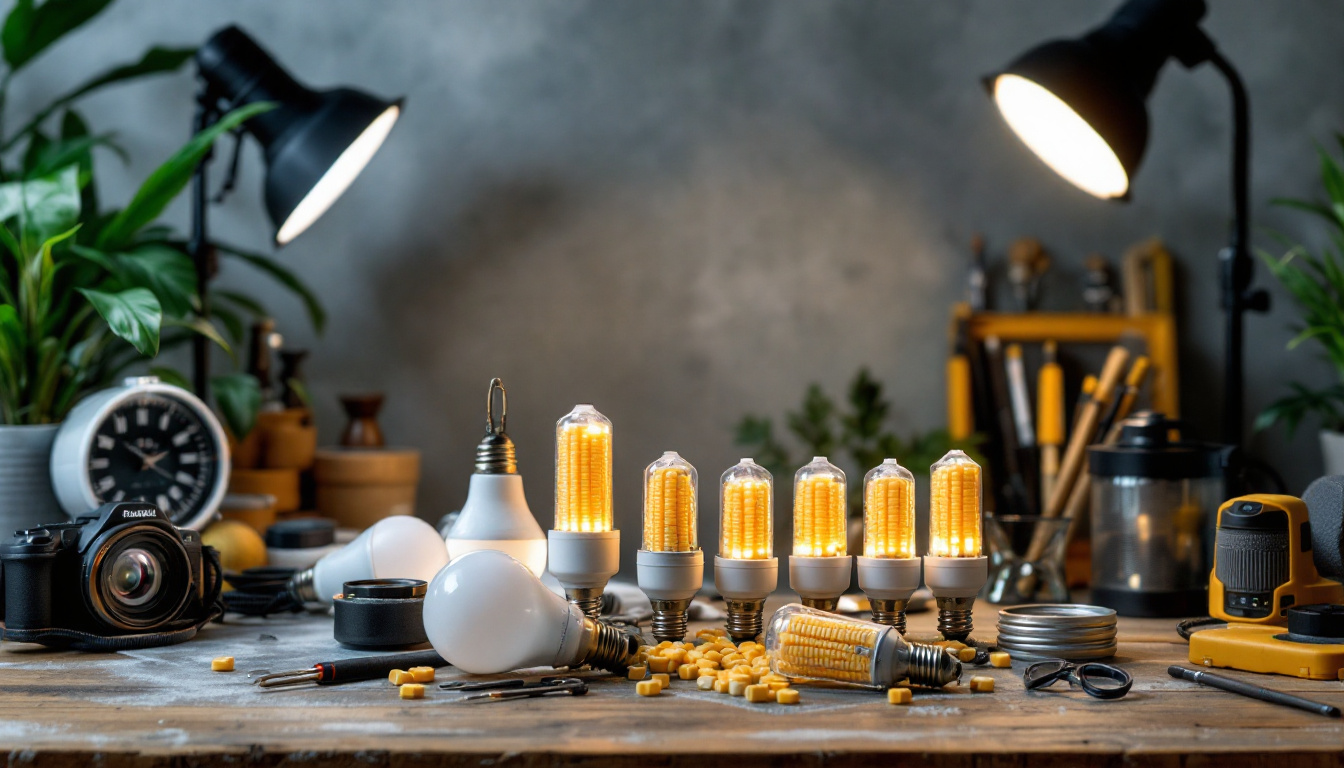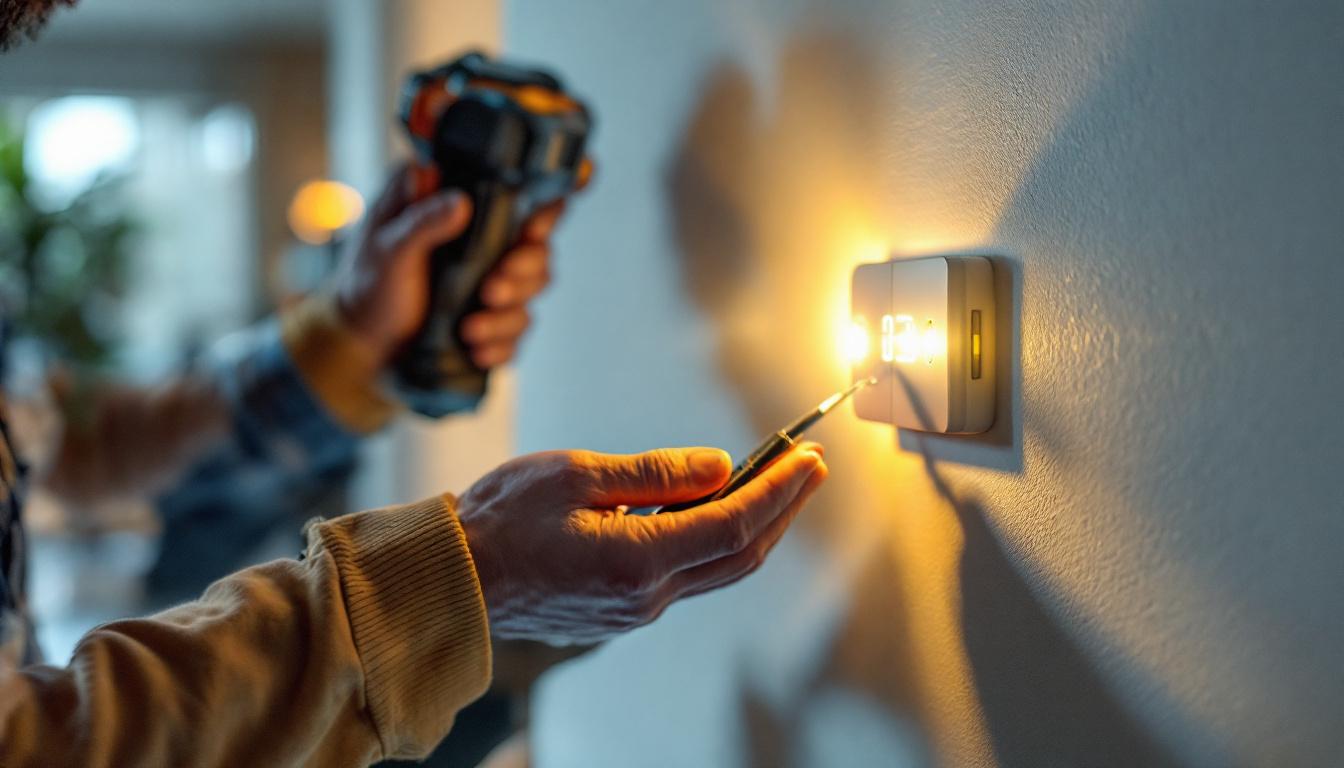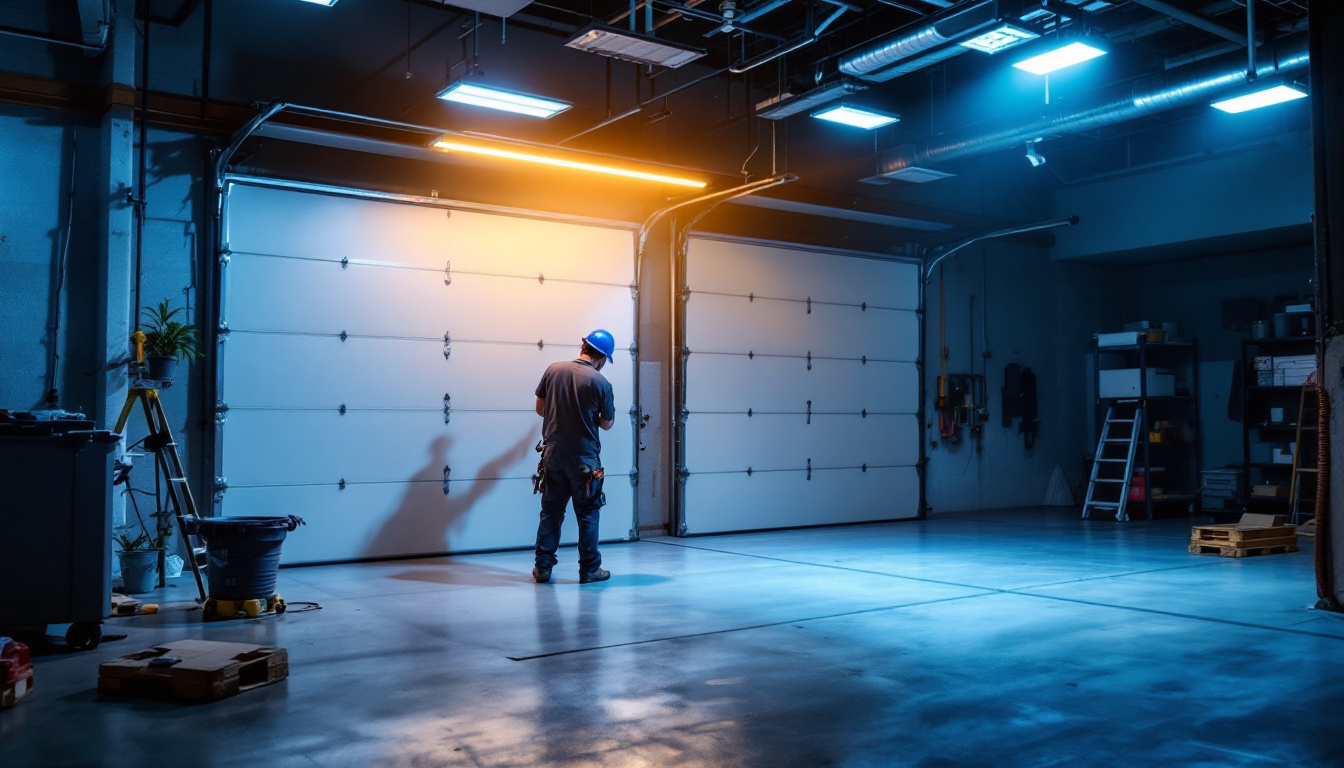
Corn bulbs have emerged as a popular choice in the lighting industry, particularly among contractors looking to offer energy-efficient and versatile lighting solutions. These innovative light sources not only provide excellent illumination but also boast a range of applications that make them suitable for various environments. This guide aims to equip lighting contractors with essential knowledge about corn bulbs, including their features, benefits, installation tips, and best practices for client consultations.
Corn bulbs, often referred to as corn cob LED lights, are designed to resemble the shape of corn on the cob. This unique design allows for 360-degree light distribution, making them an efficient option for a variety of settings. They are available in different wattages and color temperatures, providing flexibility for contractors to meet specific client needs. Their energy-efficient nature not only helps in reducing electricity bills but also contributes to a lower carbon footprint, making them an environmentally friendly choice for both residential and commercial applications.
The design of corn bulbs typically features multiple LED chips arranged on a heat sink, which helps dissipate heat and prolong the lifespan of the bulb. This arrangement not only enhances brightness but also ensures that the light is evenly distributed across the area. The technology behind corn bulbs is based on solid-state lighting, which is known for its energy efficiency and longevity compared to traditional incandescent or fluorescent bulbs. Additionally, many corn bulbs are equipped with advanced features such as dimming capabilities and smart technology integration, allowing users to control their lighting remotely or adjust brightness levels according to their needs.
There are several types of corn bulbs available in the market, each catering to different applications. Some of the most common types include:
In addition to these common types, there are also specialty corn bulbs designed for specific tasks, such as grow lights for indoor gardening or bulbs with color-changing features for festive occasions. The versatility of corn bulbs makes them suitable for a wide range of environments, from illuminating large retail spaces to creating cozy atmospheres in homes. Furthermore, the increasing popularity of corn bulbs has led to innovations in their design, including options that mimic natural daylight, which can enhance mood and productivity in workspaces.
Lighting contractors should be well-versed in the advantages of corn bulbs to effectively communicate their benefits to clients. Understanding these benefits can help in making informed decisions during installations.
One of the primary advantages of corn bulbs is their energy efficiency. Compared to traditional lighting options, corn bulbs consume significantly less power while providing the same level of brightness. This translates to lower energy bills for clients and a reduced carbon footprint, making them an environmentally friendly choice. Furthermore, the energy savings can be particularly beneficial for businesses that operate long hours, allowing them to allocate those savings toward other operational expenses or improvements.
Corn bulbs typically have a lifespan of over 25,000 hours, which is considerably longer than incandescent or fluorescent bulbs. This longevity means fewer replacements and less maintenance, making them a cost-effective solution for clients in the long run. Additionally, many corn bulbs are built with durable materials, making them resistant to shocks and vibrations. This resilience is especially advantageous in high-traffic areas or industrial settings where lighting fixtures are subject to wear and tear, ensuring that clients enjoy consistent performance without frequent interruptions.
The versatility of corn bulbs is another significant benefit. They can be used in various settings, including:
In addition to these applications, corn bulbs can also be utilized in specialized lighting scenarios, such as in street lighting or for accent lighting in art galleries and museums. Their ability to produce bright, focused light makes them ideal for highlighting specific areas or features, enhancing both aesthetics and functionality. Moreover, with advancements in technology, corn bulbs are now available in a variety of color temperatures, allowing clients to choose the perfect ambiance for their space, whether they desire a warm, inviting glow or a cooler, more energizing light.
Proper installation is crucial for maximizing the performance and lifespan of corn bulbs. Lighting contractors should consider several factors to ensure a successful installation.
Before installation, it is essential to verify that the corn bulb is compatible with the existing fixtures. Corn bulbs come in various base types, including E26, E39, and others. Contractors should ensure that the base type matches the fixture to avoid any compatibility issues.
Choosing the right wattage is vital for achieving the desired brightness. Contractors should assess the lighting needs of the space and select corn bulbs that provide adequate lumens without causing glare. Understanding the lumen output of different wattages can help in making informed recommendations to clients.
When installing corn bulbs, it is also important to consider the electrical requirements. Contractors should ensure that the electrical system can handle the load of the new bulbs. This may involve checking circuit capacities and, if necessary, upgrading the electrical system to accommodate the new lighting solution.
Effective communication with clients is essential for lighting contractors. By understanding their needs and preferences, contractors can provide tailored solutions that enhance customer satisfaction.
During initial consultations, contractors should take the time to assess the specific lighting needs of the client. This includes discussing the intended use of the space, desired ambiance, and any particular lighting challenges they may face. By gathering this information, contractors can recommend the most suitable corn bulb options.
Clients may be hesitant to switch to corn bulbs due to unfamiliarity with the technology. Contractors should take the opportunity to educate clients about the benefits of corn bulbs, including energy savings, longevity, and versatility. Providing case studies or examples of successful installations can also help build trust and confidence in the product.
After installation, contractors should offer clients maintenance tips to ensure the longevity of their corn bulbs. This may include suggestions for cleaning the bulbs, checking for any signs of wear, and scheduling regular inspections. By providing ongoing support, contractors can foster long-term relationships with their clients.
Despite their growing popularity, there are still misconceptions surrounding corn bulbs that contractors should address with clients. Clearing up these misunderstandings can help clients make informed decisions.
One common misconception is that corn bulbs do not provide sufficient brightness compared to traditional bulbs. In reality, corn bulbs are available in various wattages and lumen outputs, allowing contractors to find options that meet or exceed the brightness of conventional lighting. Educating clients about lumen ratings can help dispel this myth.
Another misconception is that corn bulbs generate excessive heat. While it is true that all light sources produce some heat, corn bulbs are designed with efficient heat dissipation mechanisms. This means they operate at lower temperatures compared to incandescent bulbs, making them safer and more efficient.
Some clients may be concerned about the initial investment in corn bulbs. While the upfront cost may be higher than traditional bulbs, contractors should emphasize the long-term savings associated with energy efficiency and reduced maintenance costs. By presenting a clear cost-benefit analysis, contractors can help clients see the value in their investment.
The lighting industry is constantly evolving, and corn bulbs are no exception. Staying informed about emerging trends can help contractors remain competitive and offer the latest solutions to their clients.
One of the most significant trends in lighting is the integration of smart technology. Many manufacturers are now producing corn bulbs that can be controlled via smartphone apps or smart home systems. This feature allows users to adjust brightness, color temperature, and scheduling, enhancing the overall user experience.
As energy efficiency standards continue to evolve, manufacturers are focusing on developing corn bulbs that consume even less energy while maintaining high performance. This trend not only benefits the environment but also provides contractors with more options to offer clients looking for sustainable solutions.
Customization is becoming increasingly important in the lighting industry. Contractors can expect to see more corn bulbs that offer customizable features, such as adjustable color temperatures and dimming capabilities. Providing clients with tailored lighting solutions can enhance their satisfaction and set contractors apart from the competition.
Corn bulbs represent a significant advancement in lighting technology, offering numerous benefits for both contractors and clients. By understanding the features, advantages, and best practices associated with corn bulbs, lighting contractors can provide effective solutions that meet the diverse needs of their clients. As the industry continues to evolve, staying informed about trends and innovations will be essential for maintaining a competitive edge. With the right knowledge and approach, contractors can confidently recommend corn bulbs as a reliable and efficient lighting solution.
Ready to elevate your lighting game with the most efficient and versatile corn bulbs on the market? Look no further than LumenWholesale, where we provide contractors with spec-grade lighting products at unbeatable wholesale prices. Say goodbye to inflated markups and hello to a vast selection of premium lighting that meets the highest industry standards. With free shipping on bulk orders, you can ensure every project shines brightly without breaking the bank. Don’t compromise on quality or value; choose LumenWholesale for the perfect blend of affordability and convenience. Wholesale Lighting at the Best Value is just a click away.

Discover the essentials of wafer lighting in this insightful guide tailored for lighting contractors.

Discover expert tips on selecting the brightest AC under-counter lights and learn how to sidestep common pitfalls in lighting projects.

Discover essential tips to avoid common mistakes with light switch built-in timers.

Discover how LED lights are revolutionizing garage projects for lighting contractors.